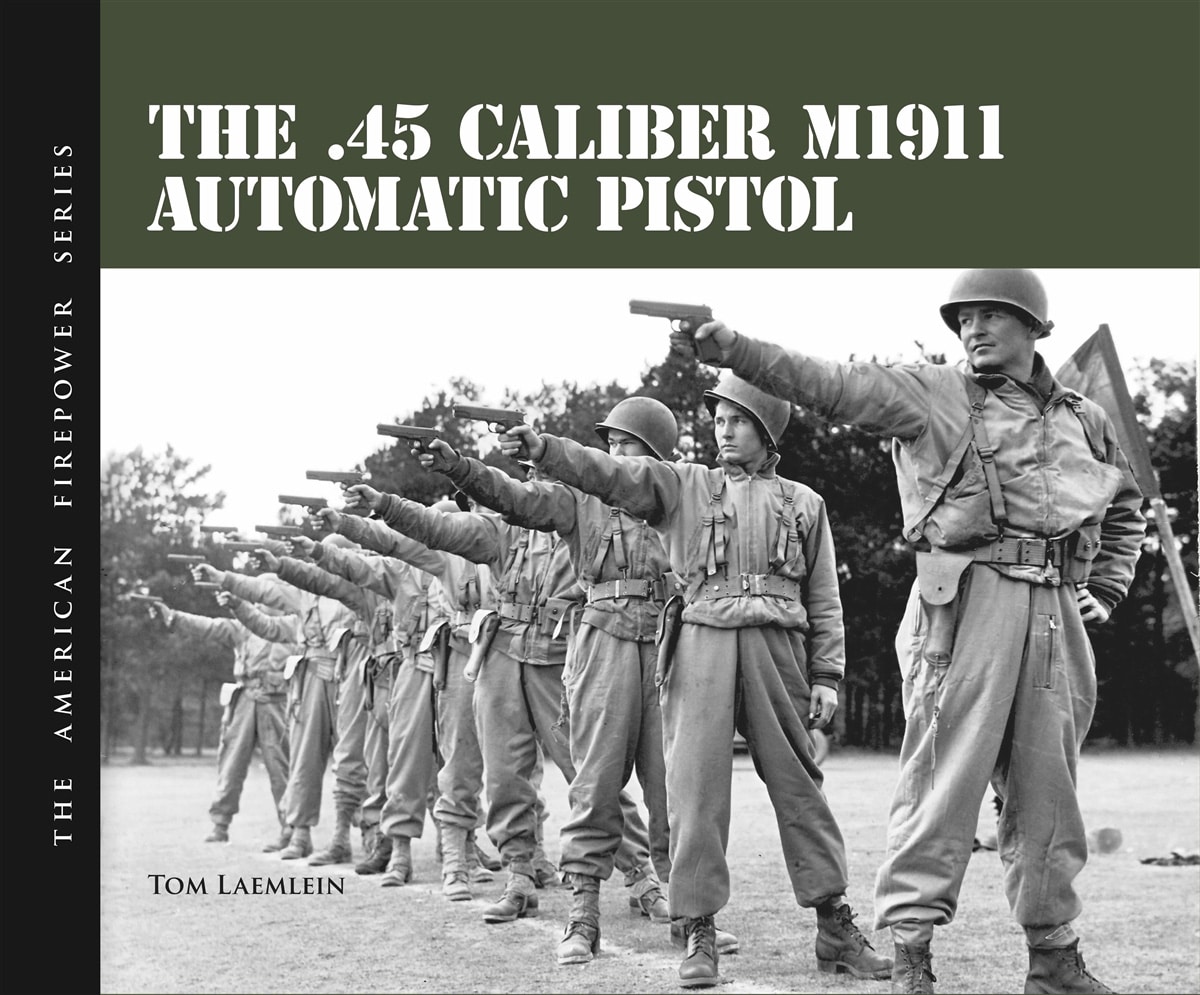Book Review: “The .45 Caliber M1911 Automatic Pistol”
November 19th, 2023
5 minute read
If you’re looking for a great Christmas gift idea for a shooter in your life, I’ve got a great book for your consideration: “The .45 Caliber M1911 Automatic Pistol”. Written by Tom Laemlein, a regular contributor here at The Armory Life, the book is a wide-format photo book that looks at the employment of M1911 handguns by the U.S. Military.
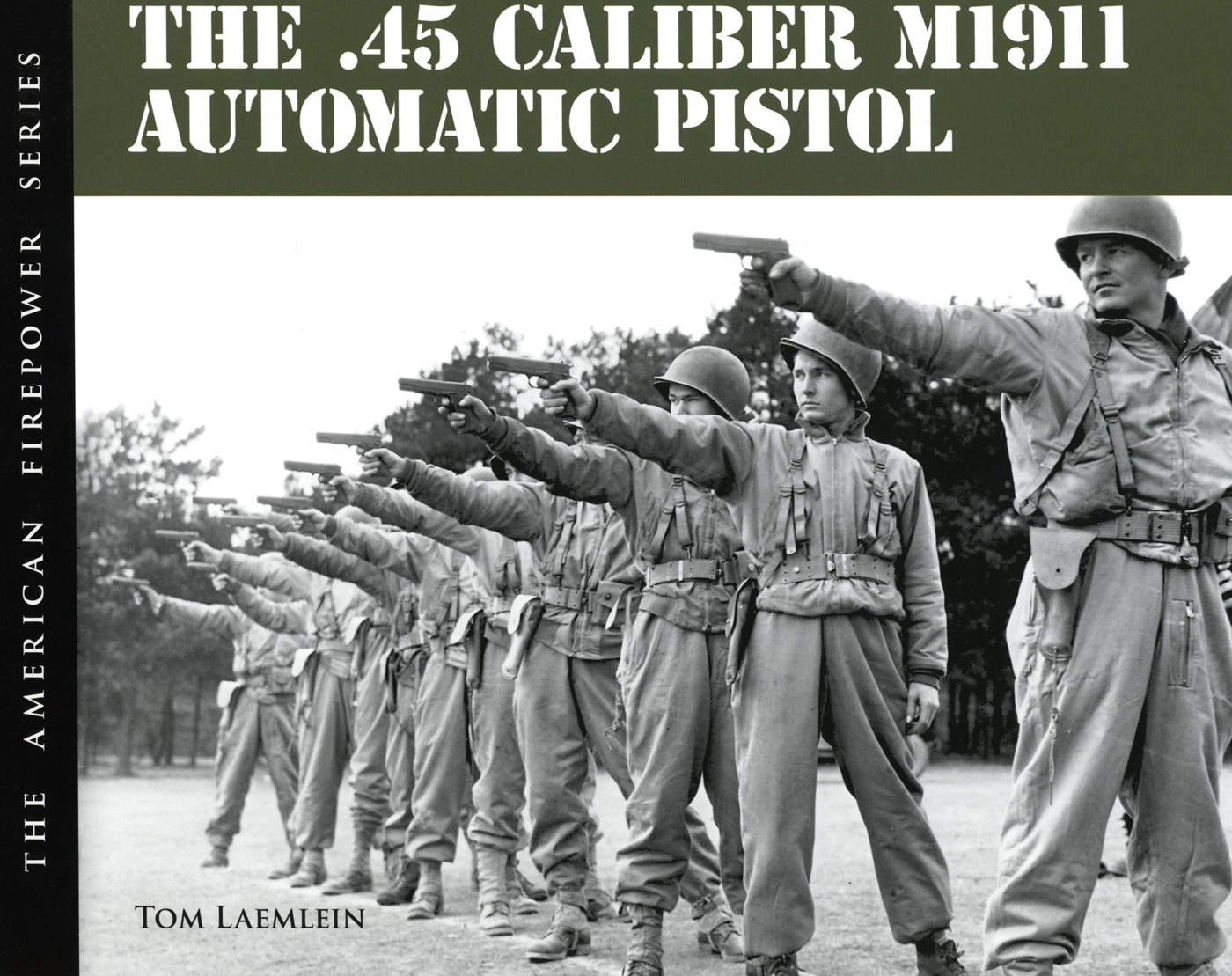
Laemlein has a penchant for finding unique images buried and forgotten in archives around the world. His own personal image collection of military arms shames many publicly funded repositories that frequently fail to properly catalog what their photos document.
This book brings hundreds of 1911 handgun photos together into a single hardbound book. Many of these images are unique to this book, having never been published before. Each turn of the page is an exciting new glimpse into the history of the .45.
Journey Through History
Starting with Veracruz in 1914, the book chronicles the military use of “Old Slabsides” through the late 1980s. The earliest photos are a rare glimpse into the border war between the United States and Mexico that started with the Mexican Revolution (1910) and did not end until after the First World War.
Laemlein includes rare photos of U.S. Navy Bluejackets, as well as Army and National Guard troops, with M1911 pistols. Of particular interest are the photos of Native American scouts armed with the famous pistols during Gen. John J. “Blackjack” Pershing’s expedition to hunt down Pancho Villa.
The Great War
Of course, the classic .45 made its debut on the world stage during World War I, which is well documented in photos of training stateside and with the American Expeditionary Forces in Europe.
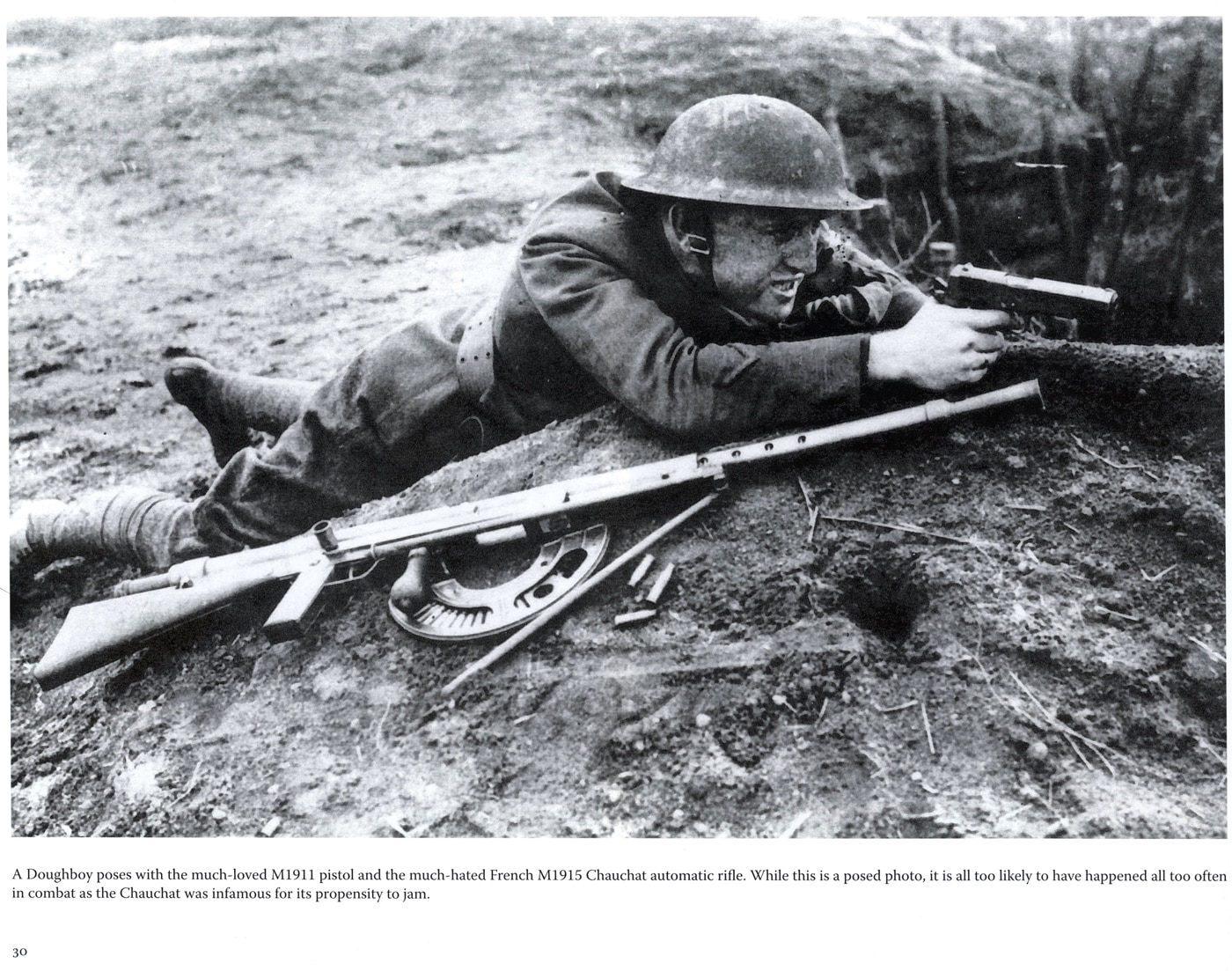
In this collection of photography, the author shows us a downed German pilot taken captive by American soldiers with an M1911, an officer with his pistol leading men during the Meuse-Argonne offensive, and Doughboys packing .45s while manning machine guns on the front. Each of these images tells a tale, the book is packed with them.
Interwar Years
While many people gloss over the time between the end of the First World War and the start of the Second, the intervening years were rich with history. Unsurprisingly, the M1911 was an integral part of that time.
Laemlein shares photos with us that document how armed guards used the M1911 to protect the mail during the rise of organized crime associated with the unintended, but predictable, consequences of Prohibition. And when guards proved insufficient, how the Marines, armed with the BAR and 1911, stepped in to assist.
It was also during this time that the United States updated the .45 with the “A1” model. The A1 introduced an arched mainspring housing on the rear of the grip, a relief cut in the side of the frame near the trigger, a thicker front sight, larger grip safety and a longer hammer spur.
World War II
If World War I was the M1911’s introduction into the international spotlight, World War II was the pistol’s sequel that was a blockbuster success. U.S. soldiers, sailors, Marines and airmen were all over the globe during this cataclysmic time, and the 1911 traveled with them.
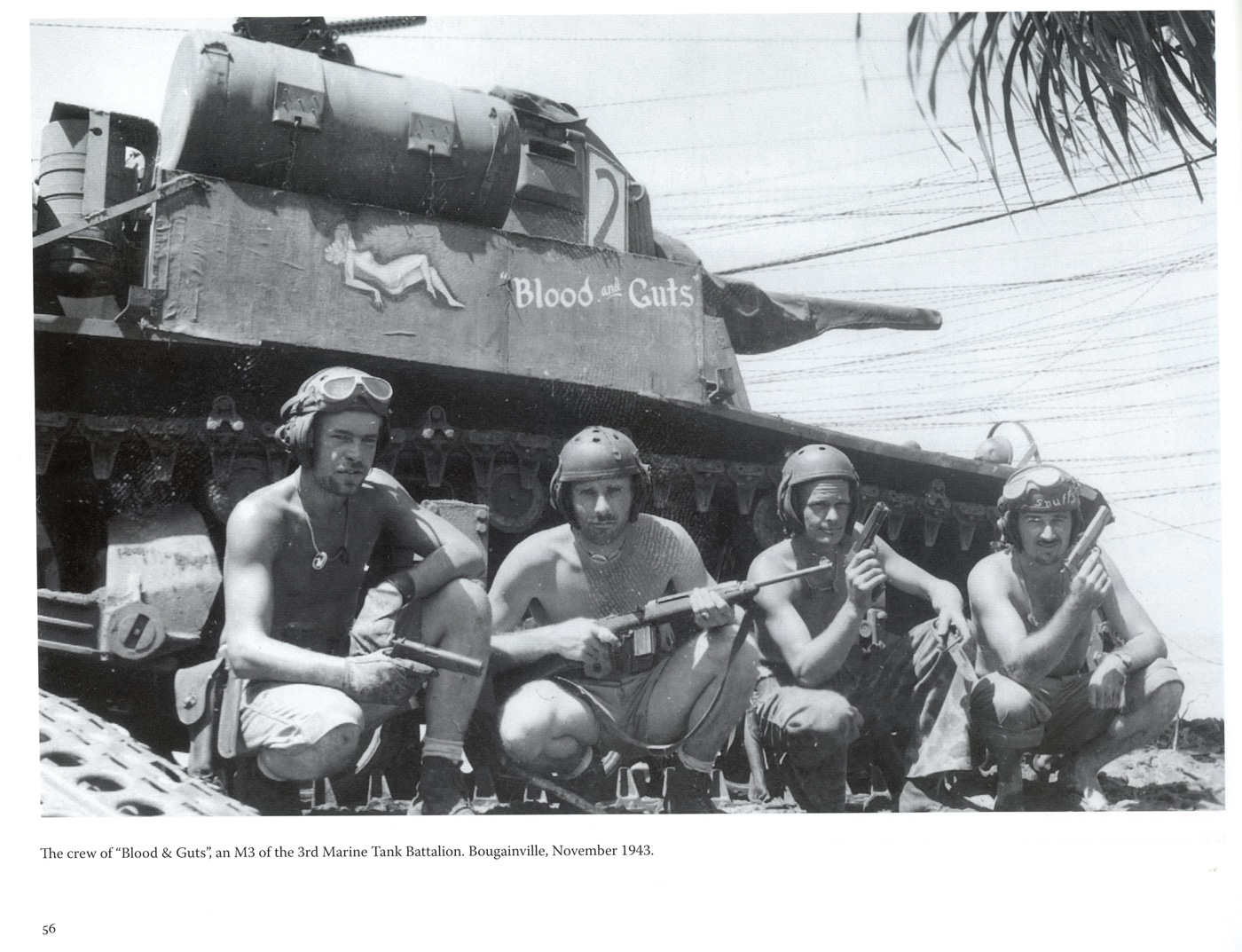
Laemlein’s collection of photos from this time is breathtaking. From pre-war training to European battlefields to the gritty island-hopping campaigns of the Pacific, the book shows the M1911 was along for every step of the bitter journey.
Laemlein includes photos of the 1911 with Marine Raiders, tank crews, fighter pilots and sailors. One of my favorite images depicts a crewman of the Enola Gay inspecting his M1911A1 prior to flying its mission over Japan.
Vietnam
When I think of the 1911 in Vietnam, I often think of the images of “Tunnel Rats” — men who would crawl into the confined underground passageways used by the communists during their invasion of the Republic of Vietnam. Often armed only with a G.I. flashlight and a .45, these brave men were like a mongoose going into a cobra’s den.
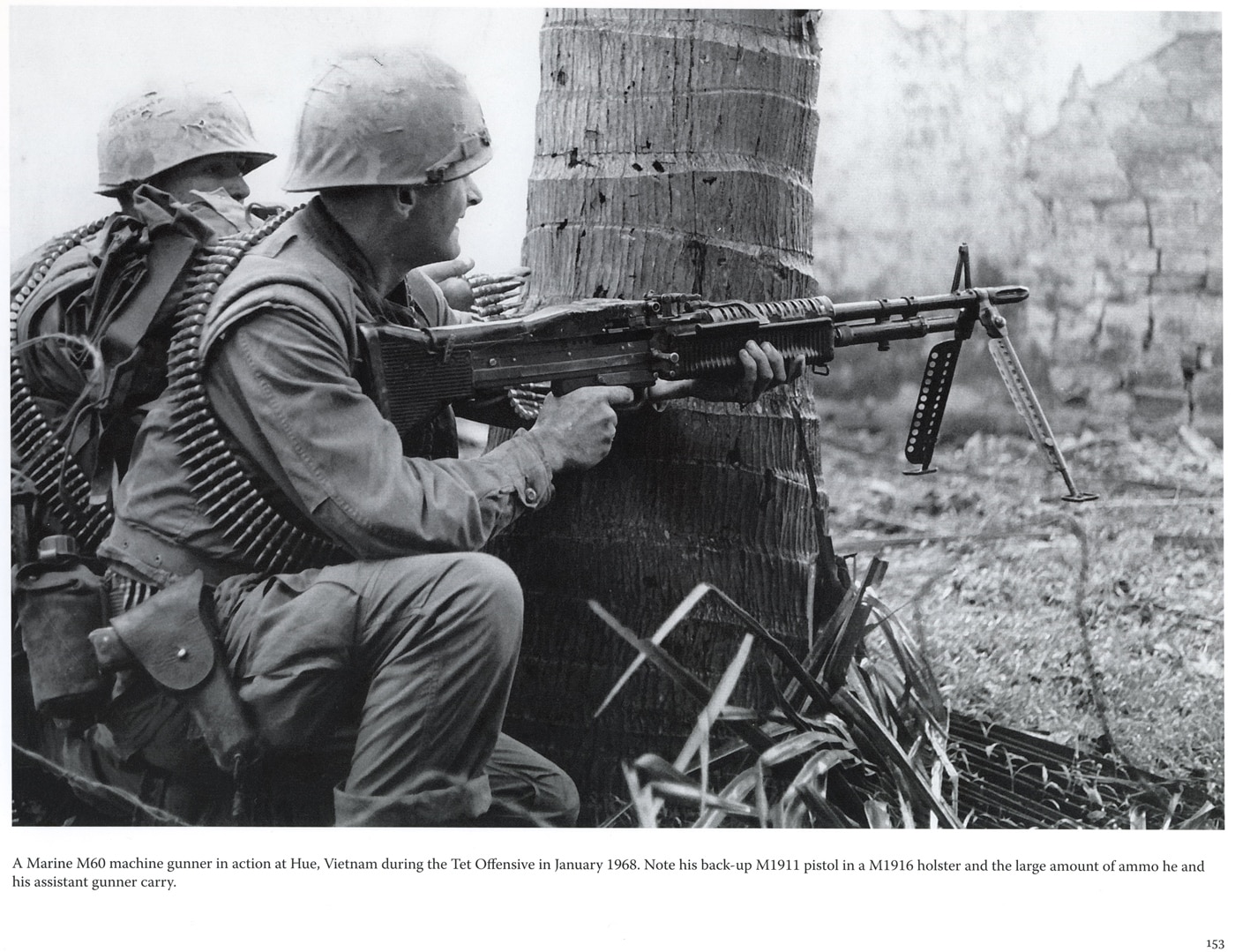
Tunnel Rats are well documented in this book. There are multiple photos showing how these men willingly entered these passages and bunkers to fight the enemy in the claustrophobic dark.
There are many additional photos of the M1911 in Vietnam included in the book. From the Happy Valley to Hue, Laemlein shows the gun in the holsters and hands of troops engaged in all kinds of activities.
Final Years
As the United States moved beyond the Vietnam War, the military began looking for a new handgun. Although the .45 served well through most of the century, there were some people looking for a modern handgun chambered in 9mm. By the middle of the 1980s, those folks got their wish and the M9 was adopted.
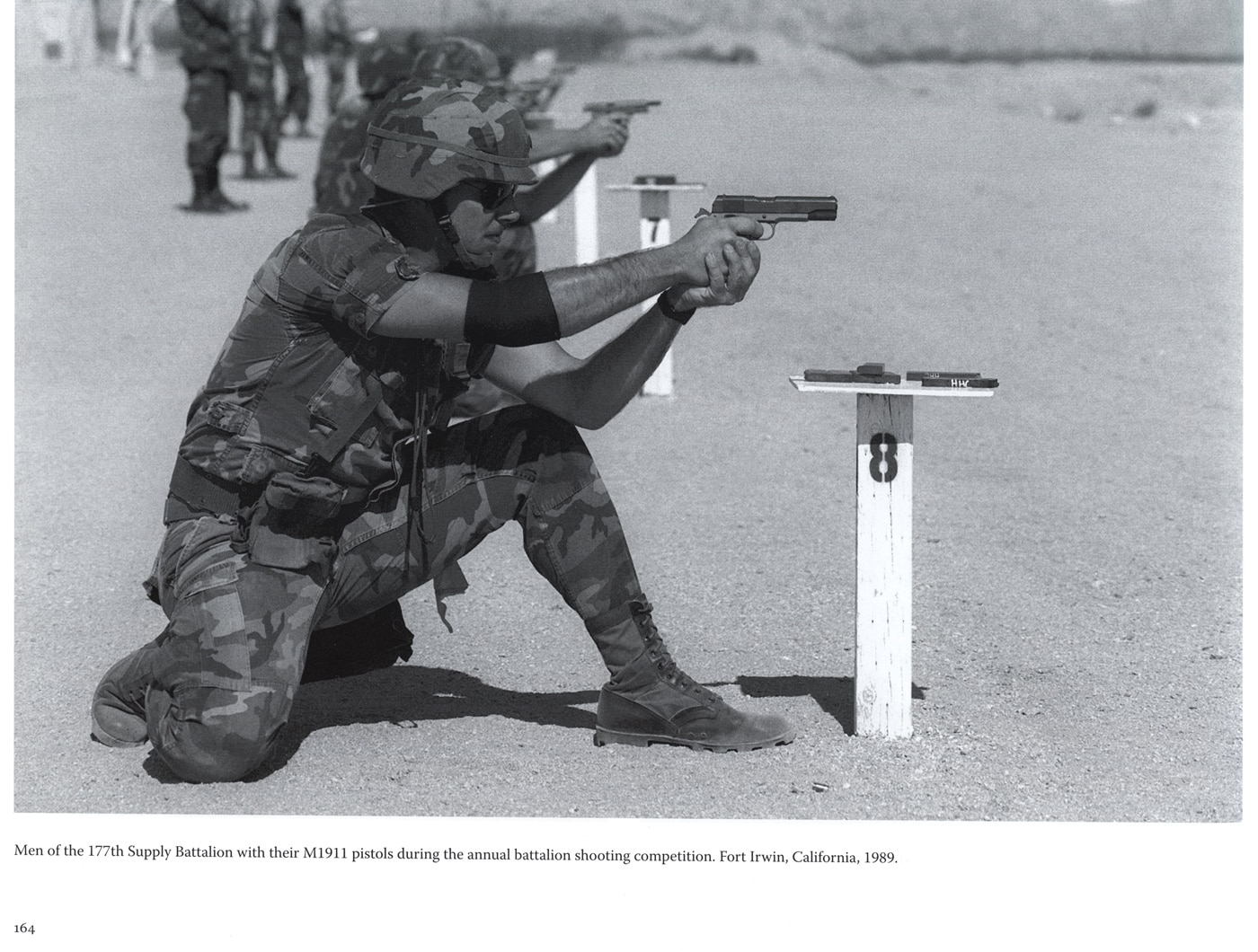
The swap-over wasn’t instant, and the M1911 continued to serve regular troops for several more years. Several special operations units received approval to continue to carry the 1911.
While Laemlein correctly leaves out photos of special operations forces, he does include photos of the M1911 in regular service throughout the 80s.
Parting Thoughts
I started this review by stating “The .45 Caliber M1911 Automatic Pistol” was a book that would make a great Christmas gift. I stand by that. However, I want to expand on that thought to ensure my full meaning is understood.
Tom Laemlein’s book is an excellent gift for any occasion. Some folks associate “Christmas gift” with “white elephant gift”, which is not what I mean. This photo book is an enthralling read and should be considered for your own collection in addition to giving it as a gift to those in your circle who share your enthusiasm for the .45 pistol. I enjoyed it immensely, and I suspect you will also. Click the image of the book below to purchase a copy.
Editor’s Note: Please be sure to check out The Armory Life Forum, where you can comment about our daily articles, as well as just talk guns and gear. Click the “Go To Forum Thread” link below to jump in and discuss this article and much more!
Join the Discussion
Featured in this article
Continue Reading
Did you enjoy this article?

 486
486




